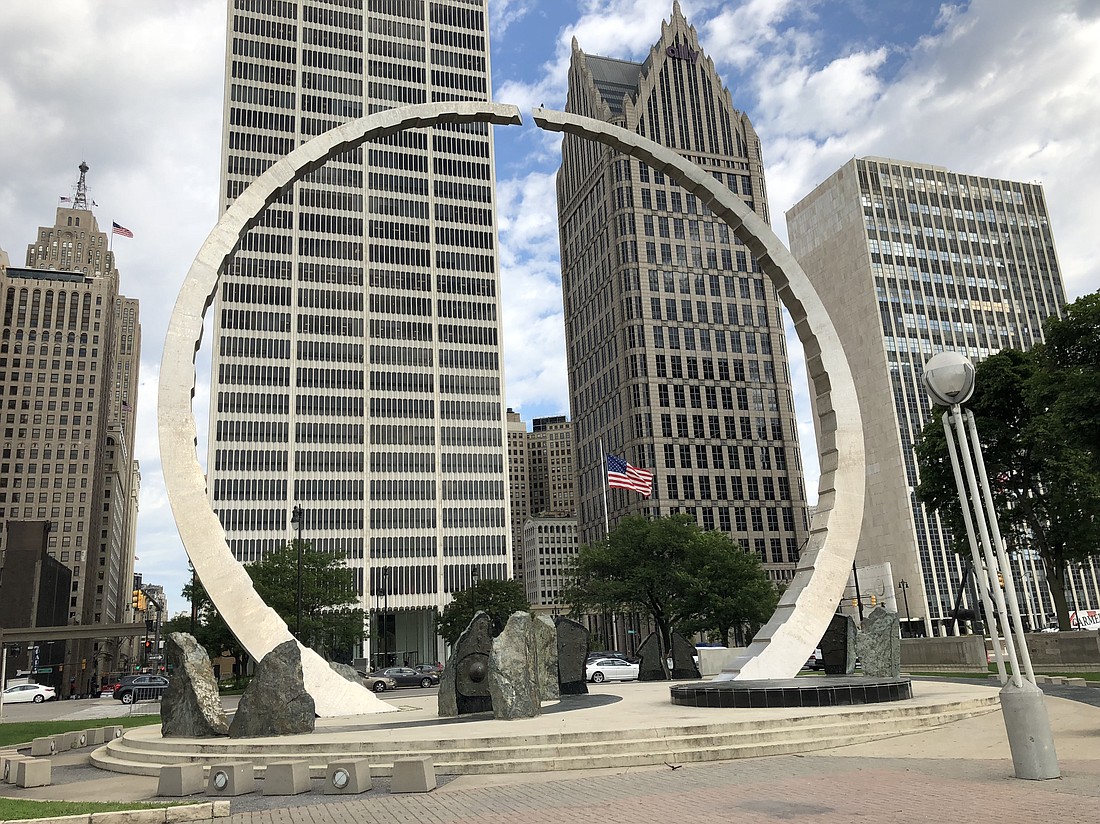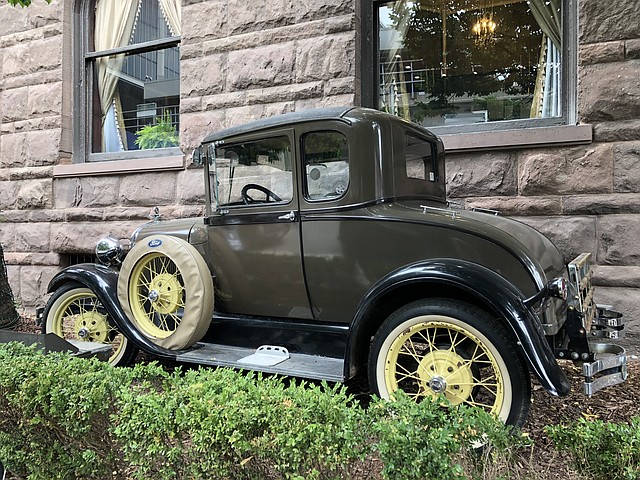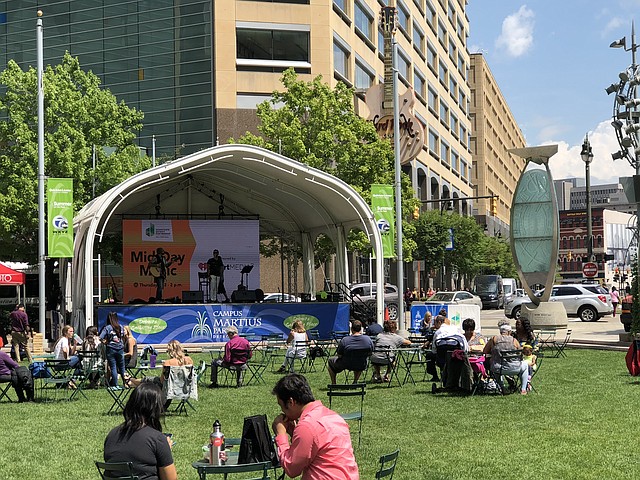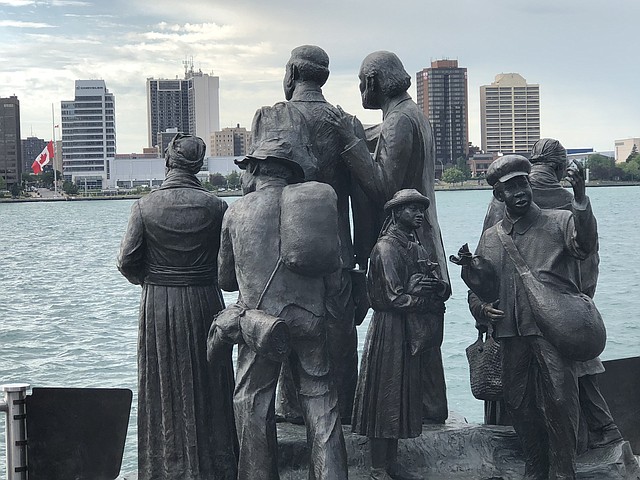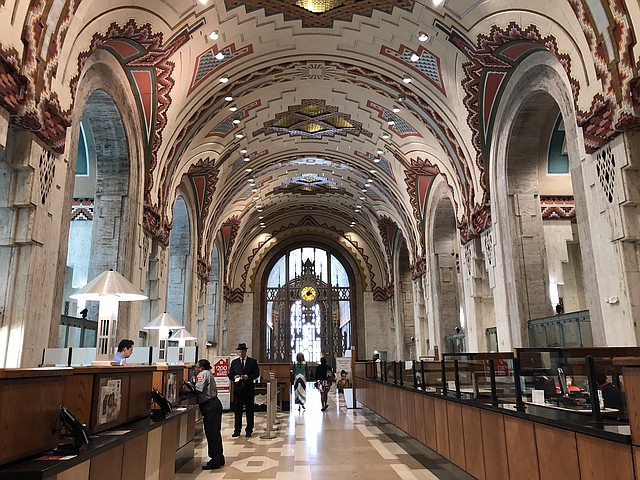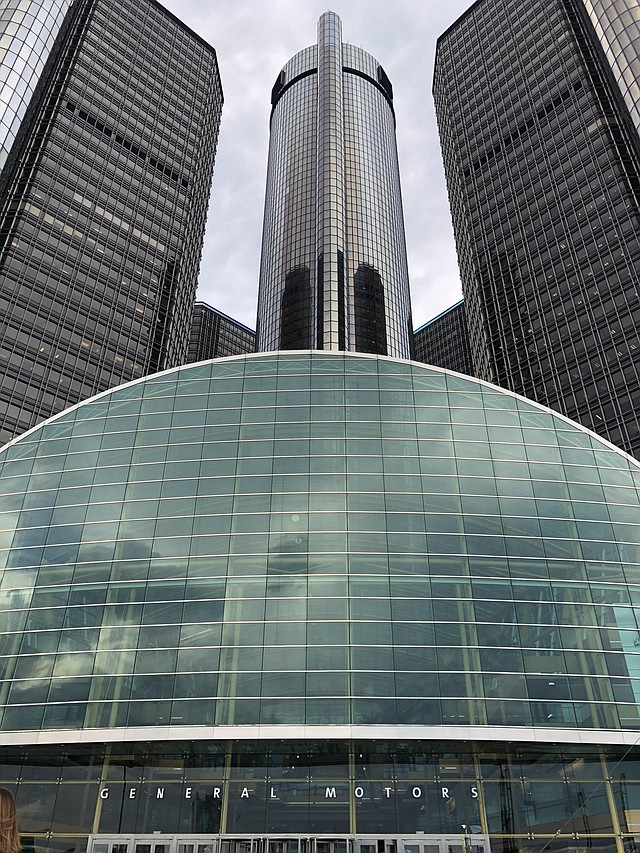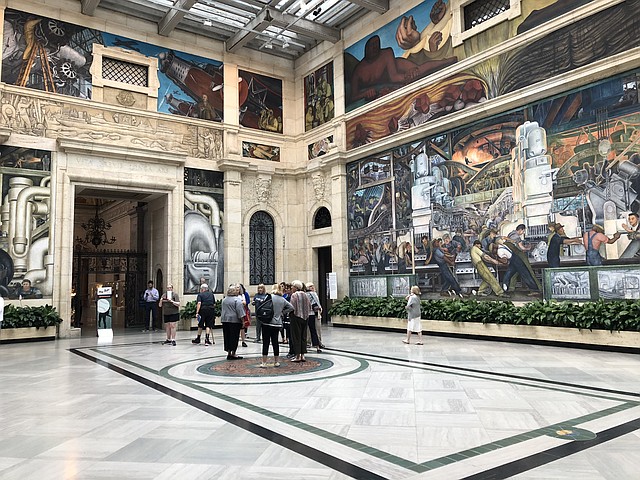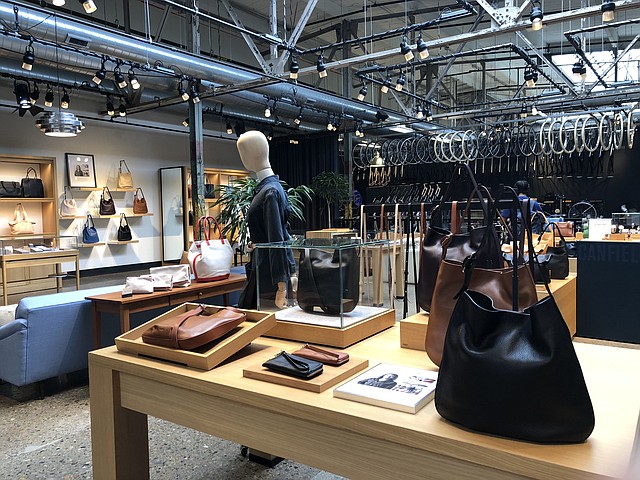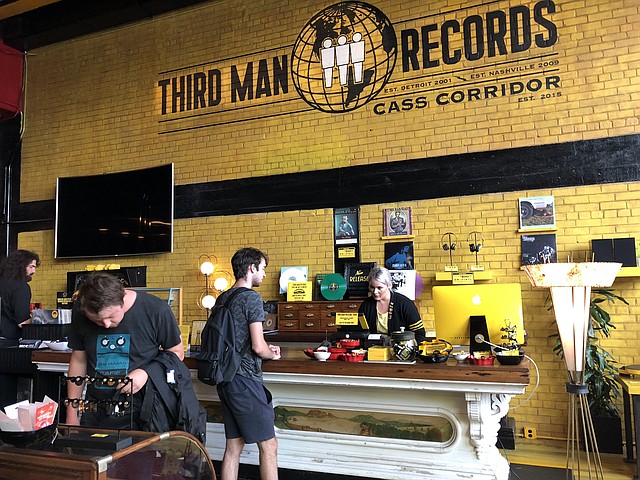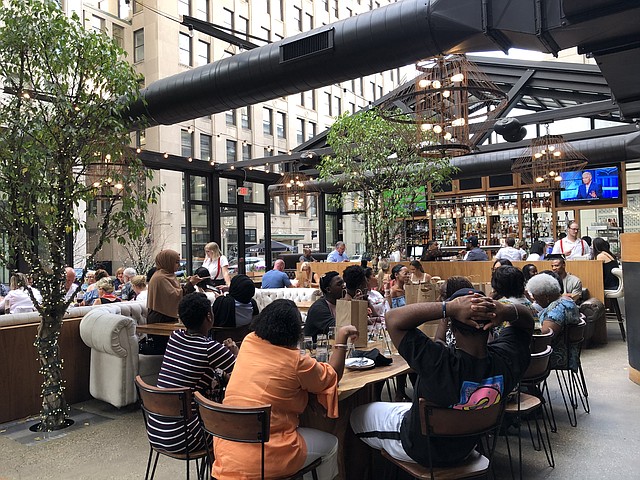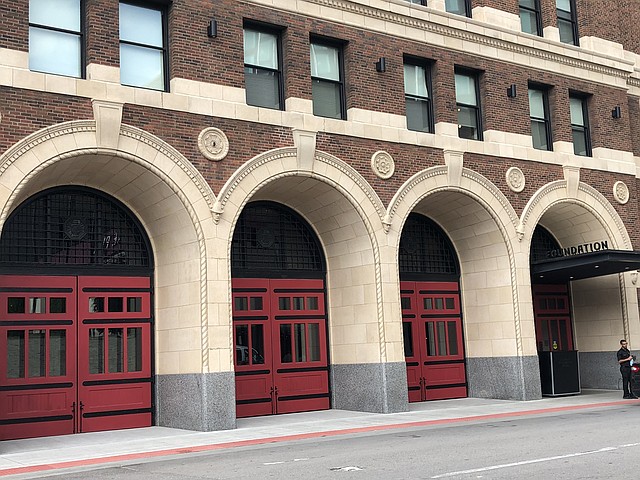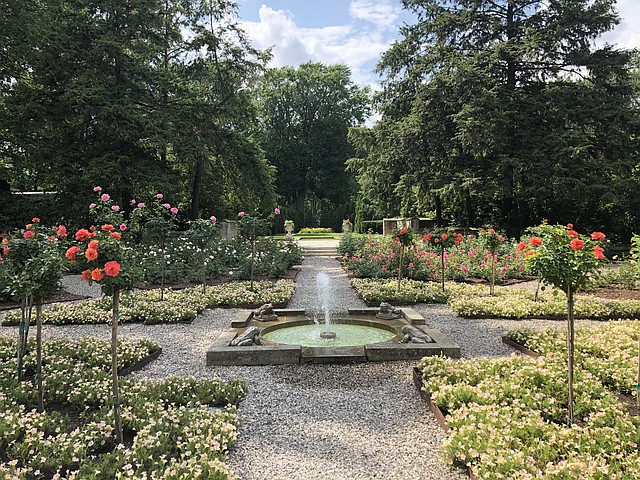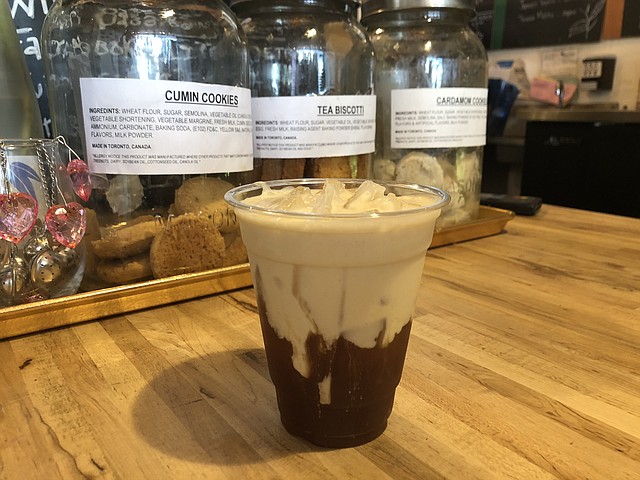Prepare to be dazzled by Detroit
August 5, 2018 at 12:15 p.m.
When I told friends I was going to Detroit, I received a lot of puzzled looks and raised eyebrows, followed by the question, “Why?” They were skeptical when I explained that my reason for visiting the town was curiosity-based, as rumor had it that “The D” was a reinvigorated destination and worthy of a look-see. Most people that I spoke to all had the same negative impressions of the city, as a gritty place with boarded up buildings, major unemployment and a high crime rate. Their views were likely shaped several years ago, based on photos and stories detailing some of the toughest and most challenging times in Detroit’s history. Filing for bankruptcy back in 2013 was a devastating blow to the image of this once storied town, the heart of the country’s auto industry and home to the Detroit Tigers, Eminem, the White Stripes, Motown and (maybe) Jimmy Hoffa’s body.
But, things have been changing in Motor City and it’s now making headlines as America’s great comeback kid. With a sizzling culinary scene, hip hotels, hot entertainment districts, eclectic shops, reactivated parks and innovative start-ups, Detroit has a fresh, new look. And the place has an energy that’s contagious, as young entrepreneurs, artists and musicians mix with generations-old mainstays, creating an exciting vibe. Residents are once again proud of their town and eager to show it off.
To get an overview of the area, take one of City Tour Detroit’s guided excursions with stops at some of the town’s famous landmarks and crown jewels. You’ll discover that this urban hub is a collection of neighborhoods including Irish influenced Corktown, with its historic buildings and friendly pubs; authentic, Old-World atmospheric Greektown; quirky, artsy Midtown; Eastern Market, site of the country’s oldest farmers market splashed with colorful mural-bedecked buildings; Rivertown, anchored by the Detroit International RiverWalk and home to some of the best green spaces and outdoor activities in the city; Mexicantown, a vibrant community full of ethnic eateries and working tortilla factories; and Downtown, Detroit’s central business district and sports mecca.
This is a city that celebrates sports with major league baseball, basketball, football and hockey teams that have devout followings. It’s the only place in the country where four professional teams play in the downtown core. The newest stadium to open is Little Caesars Arena, home to the Detroit Pistons and the Red Wings.
Make sure to stroll along the RiverWalk for picturesque views of the Detroit River and neighboring Windsor, Ontario. The promenade is a popular place for both visitors and locals, many who get their daily exercise by walking or cycling the pathway. Stop at “Gateway to Freedom,” a stirring monument paying tribute to Detroit’s role in the Underground Railroad. The installation, designed by Ed Dwight, is located at the edge of Hart Plaza, directly across from Canada, where the slaves depicted in the piece are looking hopefully for freedom. Surrounding plaques outline the city’s participation in the Underground Railroad, as well as highlight several places that were instrumental in the passage to Canada. A counterpart monument by the same artist is in Windsor.
Nearby, is the Monument to Joe Lewis, a bold tribute to one of Detroit’s legendary athletes. The sculpture, a large fist, is representative of Louis’ power in and out of the boxing ring, where he fought racial disparity. The “Spirit of Detroit” is also a notable sculpture. The enormous figure holding a sphere in its left hand and a family in the right is a well-recognized symbol of Detroit and has become a key part of the city’s identity. Another hard-to-miss monument is “Transcending,” a large broken circle over Hart Plaza. Dedicated to the labor movement, the landmark consists of two steel arcs that almost form a circle, but there’s a break in the top, representing the work that still needs to be done in the movement. Around the circle are fourteen granite boulders and at the base of the monument are plaques with quotes that speak to the labor movement throughout the years.
Architecture plays an important role in Detroit by giving its skyline unique character and an historical perspective. Even if you’re not versed in the various styles, you’ll still be able to appreciate many of the prominent buildings that appear as sentinels of the city. The Guardian Building, for example, is an art deco gem. Designated a National Historic Landmark, this renowned 1929, forty-story skyscraper is distinguished by its unique orange-colored bricks and elaborate exterior carvings by Corrado Parducci. Inside is one of the most incredible lobbies in the world. The vaulted ceiling consists of an Aztec design with multicolor, interlocking hexagons of Rookwood pottery and Pewabic Tile. And the giant columns in the room are formed from Travertine marble. You’ll notice that for a ceiling of such height, the lobby is unusually quiet. That’s because it’s covered by a horsehair mat, making it acoustical and sound absorbent. The church-like feel to the place helped give it its nickname, the Cathedral of Finance.
Other significant buildings include the Penobscot, also an art deco jewel; the classic Book Cadillac (now a Westin Hotel); One Detroit Center, with its distinct neo-gothic spires; the Italian Renaissance-style Book Tower; the Metropolitan Building, soon to be Element Detroit, an upscale hotel; and the GM Renaissance Center, the world headquarters for General Motors. The latter boasts a 44,000 square-foot, interactive showroom featuring the company’s vehicles and specialty cars.
Some of these beautiful buildings were abandoned over the years and faced possible demolition. Thankfully, many of them have been or are in the process of being renovated into mixed-use structures. At the center of this major redevelopment are two names: the Ilitch family, owners of Little Caesars Pizza, the Detroit Tigers and the Detroit Red Wings, and Dan Gilbert, owner of Quicken Loans and the Cleveland Cavaliers.
Music takes center stage in Detroit. The Motown scene is deeply rooted in the city and fans of this sound flock to Hitsville U.S.A., home to the Motown Museum. Founded by Esther Gordy Edwards in 1985, this American treasure is a popular tourist destination. Tens of thousands of visitors from across the globe come to stand in Studio A, where their favorite artists and groups recorded the much-loved music, and to view the restored flat where founder Berry Gordy lived with his wife and kids during the company’s early days. On a tour through the place, you’ll learn how one man’s vision became a reality with an $800 loan from his family and a deep desire to make great stories and a great beat that everyone could enjoy. The array of Motown artifacts, photos, costumes, posters and other memorabilia is extensive, as is the wealth of information that your guide shares. It’s a wonderful walk down memory lane, ending with a group attempt at singing the Temptations’ hit tune, “My Girl,” – acapella, no less!
For art lovers, a visit to the Detroit Institute of Arts is a must. The museum has one of the largest and most significant art collections in the U.S., with over 65,000 works that date from the earliest civilizations to the present. Included are paintings, sculptures, photos, prints and murals representing African, Egyptian, Asian, American, European and Indigenous American art. Some of the museums highlights include Rembrandt’s “The Visitation,” “The Wedding Dance” by Peter Bruegel the Elder, Gentileschi’s “Judith and Her Maidservant with the Head of Holofernes” and “Self-Portrait” by Van Gogh (the first painting by the artist to enter a public museum in the U.S.). There are also numerous outstanding pieces by renowned Impressionists and even a room dedicated to everything Medici.
A favorite of many visitors to the museum is “The Detroit Industry Murals,” a series of twenty-seven large-scale frescoes by Mexican artist Diego Rivera. The panels were painted on the walls of the inner court, and tell a story of industrial culture in Detroit that is also a cautionary tale of technology and science. Completed between 1932 and 1933, the murals were considered by Rivera to be his most successful work. In 2014, they were given National Historic Landmark Status.
The institution also holds special exhibitions throughout the year. Currently, more than sixty original costumes featured in the first seven films of the “Star Wars” saga are on display in “Star Wars and the Power of Costume.” And in celebration of the great American pastime of baseball, there’s “Play Ball! Baseball at the DIA,” an exhibit of vintage baseball cards (check out the rare Honus Wagner card), along with memorabilia and collectibles commemorating the 50th anniversary of the Detroit Tigers’ 1968 World Series victory.
When it comes to shopping, Detroit’s got you covered with everything from high end labels to secondhand goods and antiques. For hyper local goods, stop in at Shinola and drool over the ultimate in contemporary watches, briefcases, assorted leather goods and even bicycles. And yes, if you think you recall Shinola being a brand of shoe polish that was popular during the first half of the 20th century, you’re right. Now defunct, the brand name was acquired by Shinola Detroit in 2011, a company that is dedicated to bringing jobs back to the city.
Third Man Records is another Detroit-centric store. Founded by front man Jack White of the band, the White Stripes, the place is a combo record shop, novelties lounge, in-store performance stage, record booth and vinyl record pressing plant, which can be witnessed in action through viewing windows.
Detroit Denim should also be on your list. All of its products are sourced from American companies and handmade in Detroit. Founder Eric Yelsma wanted to expose the myth that it’s impossible to create a sustainable jeans business domestically, while at the same time, he sought to diversify the manufacturing base of Detroit.
When you’re ready for sustenance, be prepared to encounter a foodie’s paradise. Detroit, with its roots as a European city and leader of the industrial movement, has a culinary scene that is a fusion of many cultures and locations around the globe. Take your taste buds on a tour at such eateries as Townhouse Detroit, a neighborhood classic specializing in modern American comfort dishes; award-winning European and Mediterranean influenced Parc, located in lively Campus Marcius Park; newly-opened Lumen, a Belgian style brasserie in Beacon Park, or the Detroit Club’s Grille Room. The latter used to be an exclusive, member-only private club, but is now open to the public after major renovations, and offers a chophouse-style menu in a historic locale.
It might come as a surprise when you hear that there’s a vineyard in Detroit. Yet, the city has a history of winemaking and Michigan has one of the oldest wine industries in the country. According to Blake Kownacki, co-founder and head winemaker of Detroit Vineyards, “The D” is a perfect setting for developing, marketing and tasting fine wines. He points to the fact that Southeast Michigan has several microclimates suited for growing top-quality grapes.
Detroit Vineyards is the first fully operating winery in Detroit in more than half a century. The company uses Michigan grapes in its production of boutique wines. The grapes primarily come from the Lake Michigan shore, but Kownacki has piloted a program in which he provides the trellising materials, grapevines and training to members in the community who have vacant land near their home. After the vines mature, he purchases the grapes from the residents.
The company has outgrown its humble beginnings and is in the process of moving its production quarters to an 11,000 square-foot facility located in the former Stoh’s ice cream factory. A portion of the building is slated to be a tasting room, which will open to the public in early 2019. The place will fit in well among all the city’s hip restaurants and wine bars.
Getting around Detroit is easy. You can hoof it through the city’s walkable downtown, ride the QLine streetcar, hop on the People Mover light-rail system, participate in the bike share/rental program MoGo, take a bus, or search out a Zipcar location for destinations further afield.
With all the new hotels opening in the city, there are plenty of options when it comes to accommodations. For a stylish boutique experience, stay at the Detroit Foundation Hotel, once the headquarters of the Detroit Fire Department. The historic, 1929 building has been beautifully renovated and the manner in which the architecture and interior design pay homage to the authenticity of the former fire station is to be commended. This urban, sophisticated establishment has a chill vibe and boasts a chic restaurant, The Apparatus Room. Helmed by two Michelin-Starred Chef Thomas Lents, the menu focuses on iconic New American cuisine rooted in Midwestern ingredients. For a truly memorable evening, opt for the Chef’s Table, an intimate, multi-course dining experience where you put your palate in the talented hands of the chef.
Though Detroit has an ample amount of attractions that can keep you occupied for days, allow some time to explore a few sights outside the city. History buffs will want to tour the Edsel & Eleanor Ford House, as well as Meadow Brook Hall. Both are estates belonging to automotive aristocracy. Edsel Ford was the only child of Clara Bryant and Henry Ford, who founded Ford Motor Company. Edsel and his wife Eleanor built an impressive, yet unpretentious house, situated on the banks of scenic Lake St. Clair, where they raised their four children, shielded from the demands of their public lives. The residence was designed to resemble a cluster of English Cotswold village cottages, complete with stone roofs, vine-covered walls and lead-paned windows. Inside is an extraordinarily diverse collection of art, antiques and furniture that reveal the couple’s educated and cultured tastes. And the grounds appear almost completely natural, but were actually fastidiously planned by noted landscape architect Jens Jensen.
For the young and young-at-heart, the most appealing building on the grounds is the Play House. This charming, two-thirds scale Tudor-like structure was built especially for young Josephine Ford, as a gift from her grandma Clara on her seventh birthday. The house contains miniature furnishings fit for a child in the kitchen, bedroom, bathroom and sitting room. Characters from well-known nursery rhymes are decorated in stucco on the sides of the second-story gable ends.
Meadow Brook Hall was built by Matilda Dodge Wilson, widow to automobile pioneer John Dodge, and her second husband, lumber broker Alfred Wilson. Now a National Historic Landmark, the house represents one of the finest examples of Tudor-revival architecture in the country. At 88,000 square-feet, it’s the fourth largest historic home in the U.S., and boasts a whopping 110 rooms, 39 chimneys (each one unique), a beauty parlor, ballroom (where the Tommy Dorsey Band and Frank Sinatra once performed), game room, eight vaults, designated florist quarters, two elevators, two swimming pools, a nine-hole golf course and fourteen gardens. There are 75,000 fine and decorative objects in the house from all over the world and many of the ceilings and walls display intricate carvings. In Alfred’s study, for example, carvings in the wood paneling around the room detail his life story.
Matilda Dodge Wilson was famous in her own right, as she was the first female lieutenant governor of Michigan and the first woman to be chairman of the board of a bank in the U.S. She also received honorary doctorate degrees from Michigan State and Oakland University.
After visiting these amazing estates, you might desire to have a luxe overnight of your own. The Townsend Hotel in the tony suburb of Birmingham will definitely meet your needs. Just twenty miles from downtown Detroit, this AAA Four-Diamond boutique property has been the recipient of a variety of travel and hospitality industry publication and traveler accolades. Known for its exceptional service and amenities, the establishment has been host to presidents, monarchs, ambassadors and shahs, as well as celebrities and sports stars. The rooms and suites are stylish, yet comfortable, with deep soaking tubs, 330 thread count Frette sheets and a technology system that conveniently allows you to control lights, temperature, privacy and service signs all in one place, at the touch of a fingertip.
The hotel also offers afternoon tea in the English tradition, with finger sandwiches, scones with lemon curd and an array of mouth-watering pastries. You’ll partake in this refined ritual surrounded by Waterford crystal chandeliers, handsome mahogany wood, marble fireplaces and fresh floral arrangements. It’s an ambiance brimming with elegance and charm.
Stroll the streets of Birmingham and enjoy the assortment of shops, restaurants and spas. At Suhm-Thing, you’ll find unique Michigan-related gifts, while at Stem & Stone, you can create your own terrarium. For eclectic clothing and household accessories, check out Found Objects. Make sure to stop at Eli Tea Bar, where you can travel the world as you choose from over fifty different teas and infusions, like Hawaiian Island Green Tea, Kenyan Safari, Kyoto Sencha Rose and Traverse City Cherry Festival. Or try the Cheese Tea for a cup of decadence! It’s a sweet organic Assam Gold Black Tea topped with house made whipped liquid cheesecake and best served iced. This modern tea room is the brainchild of Eli Majid, a botanist turned tea master, who became interested in tea because it was a way for him to continue his research in plant biology while also engaging with the public.
Dine at 220 Merrill, one of Birmingham’s top restaurants. Housed in the historic Edison Building, this trendy eatery is a local gathering place that’s known for serving up tasty contemporary American cuisine, along with Italian specialties and delectable desserts. The bar is a happening spot at night and the patio has a great al fresco ambiance.
If you go:
Debbie Stone is a travel writer and columnist, who explores the globe in search of unique destinations and experiences to share with her readers. She’s an avid adventurer who welcomes new opportunities to increase awareness and enthusiasm for travel and cross-cultural connections. Her stories appear in a number of print publications as well as on various travel-oriented websites, and she can also be heard on the radio dishing about travel with the hosts of Big Blend Radio. Debbie is a longtime Seattle area resident, who currently resides in Santa Fe, New Mexico.
